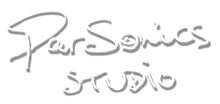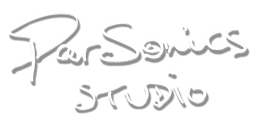Dark Side of the Moon
By 1973, Parsons had been a staple employee of EMI Studios (now known as Abbey Road Studios). He’d been there since he was 18 years old. Leaving public school upon applying and being accepted into an apprenticeship position with EMI’s research technical department in Hayes, UK, within a year, he dared to ask his superiors to transfer him to the prestigious Abbey Road studios. Parsons’ drive to learn the details of sound engineering outstripped his patience, and when management smirked at his requests, he took action and wrote the bosses at the studio directly. Beating the odds, he miraculously received an interview invite and subsequently the job (things like that seemed to happen in the 60s music business). His first assignment was in the tape library and within a year he was promoted to Tape Operator where he would be in the studio proper while recording sessions were being run. His very first session would not be for an unknown band. His baptism by fire found him with the Beatles facing a project that would be called Get Back (yes, a young Alan Parsons can be seen in the Peter Jackson film). Alan must have done well because he was asked to stay for their final album session, Abbey Road. As the Assistant Engineer, he was the man John Lennon turned to when deciding not to just fade out “I Want You (She So Heavy). “John said, ‘There! Cut the Tape There!’ Alan recalled years later, “and that’s how we got the sudden ending for that song.” His reputation grew within EMI and his succeeding years would bring Parsons assignments that included The Hollies, Roy Harper, and in the fall of 1973, work with Paul McCartney & Wings on Red Rose Speedway. It was around this period that he was assigned to Pink Floyd and the budding sessions for The Dark Side of The Moon. History has certified that Dark Side is a groundbreaking album, employing experimentation in multi-track recording, tape loop technology, and synthesizers (all relatively new techniques at that point). The effort crystallized the emerging category of the “concept album” and opened a new market of popular music without the “pop.” The members of the band have given great credit to Alan for opening the door to various innovations. Early in the process, drummer Nick Mason and bassist Roger Waters began home experiments of recording sound effects on a tape loop, so they could be synced up with the music’s beat (such as the coin sounds and cash register jolts for the popular track “Money”). Doing this from home was one thing, but when they brought the concept to the studio, only an advanced engineer like Parsons could implement such pre-digital techniques with the mechanics and abilities of Abbey Road. Mason explained in his 2004 biography, Inside Out, “After the recording (of the sounds on tape loop), where one piece fades out and another fades up, were still a fairy serious maneuver. Giant tape machines would be trundled in from all parts of the building and hooked up into the mixer.” Even with Alan’s engineering expertise, he didn’t possess enough hands to manage all the necessary tasks. So, starting points would be carefully marked (by Alan) and band members positioned with fingers poised on various buttons.” A single mistake by anyone in the control room would mean starting the process from scratch. Parsons is credited for conceiving, implementing, and leading the manual sequence that made the soundtrack unique and thoughtful. At a 2015 lecture at Abbey Road studios, I personally got the chance to ask Parsons how he captured the coin sound in the vastly sized studio #2. He laughed and said that those sounds were not recorded in the studio proper, rather, they were recorded one night in the control room when he simply dropped the coins onto the TG 12345 mixing desk. He then went over to the original desk (in which the studio staff had already rolled in for the lecture…see picture) and tossed a few coins and let them fall. “Not a lot of planning but trying something new!” Parsons said with a smile. His Dark Side contributions continued with the band, painting a sonic landscape that brought out the themes of the album. It was Parsons who knew and recruited British singer Clare Torry to perform the wordless bone-chilling vocals on “The Great Gig In The Sky.” Among his other standout contribution was the weaving of punctuated voices, that serve as “witnesses” to themes of conflict and insanity. Mason explains, “Roger (Waters) drafted a series of questions about madness and violence, and I wrote them on a set of cards. They were placed, face down, on a music stand. We then invited into the studio whoever we could find around the Abbey Road complex, our crew, the engineers, and other musicians.” Two of those recruits were Paul and Linda McCartney who were working in an adjacent studio. As he had already had a working relationship with Paul, Parsons was dispatched to recruit the ex-Beatle plus wife, and he came back with them adding along Wings’ guitarist Henry McCullough. With Parsons adding spooky echo dimensions to all of the spoken words, the two McCartneys’ contributions were deemed not authentic enough, but McCullough’s efforts proved to be a good fit with the fabric of the theme picture (“I don’t know, I was really drunk at the time”).
- From the article, "Alan Parsons and “The Dark Side of The Moon” by Steven Valvano
The Dark Side of the Moon was recorded at EMI Studios (now Abbey Road Studios) in approximately 60 days between May 31, 1972 and February 9, 1973. Pink Floyd were assigned staff engineer Alan Parsons, who had worked as assistant tape operator on their fifth album, Atom Heart Mother (1970), and had gained experience as a recording engineer on the Beatles' Abbey Road and Let It Be albums. The Dark Side of the Moon sessions made use of advanced studio techniques, as the studio was capable of 16-track mixes which offered greater flexibility than the eight- or four-track mixes Pink Floyd had previously worked with, although the band often used so many tracks that second-generation copies were still needed to make more space available on the tape. Mix supervisor Chris Thomas recalled later, "There were only two or three tracks of drums when we came to mixing it. Depending on the song, there would be one or two tracks of guitar, and these would include the solo and the rhythm guitar parts. One track for keyboard, one track for bass, and one or two sound effects tracks. They had been very, very efficient in the way they'd worked."
The first track recorded was "Us and Them" on May 31, followed seven days later by "Money". For "Money", Waters had created effects loops in an unusual 7
4 time signature from recordings of money-related objects, including coins thrown into a mixing bowl in his wife's pottery studio. These were re-recorded to take advantage of the band's decision to create a quadraphonic mix of the album, although Parsons later expressed dissatisfaction with the result of this mix, which he attributed to a lack of time and a shortage of multitrack tape recorders.
"Time" and "The Great Gig in the Sky" were recorded next, followed by a two-month break, during which the band spent time with their families and prepared for a tour of the United States. The recording sessions were frequently interrupted: Waters, a supporter of Arsenal F.C., would break to see his team compete, and the band would occasionally stop to watch Monty Python's Flying Circus on television while Parsons worked on the tracks. Gilmour recalled, "...but when we were on a roll, we would get on."
- From the Wikipedia article, The_Dark_Side_of_the_Moon



















